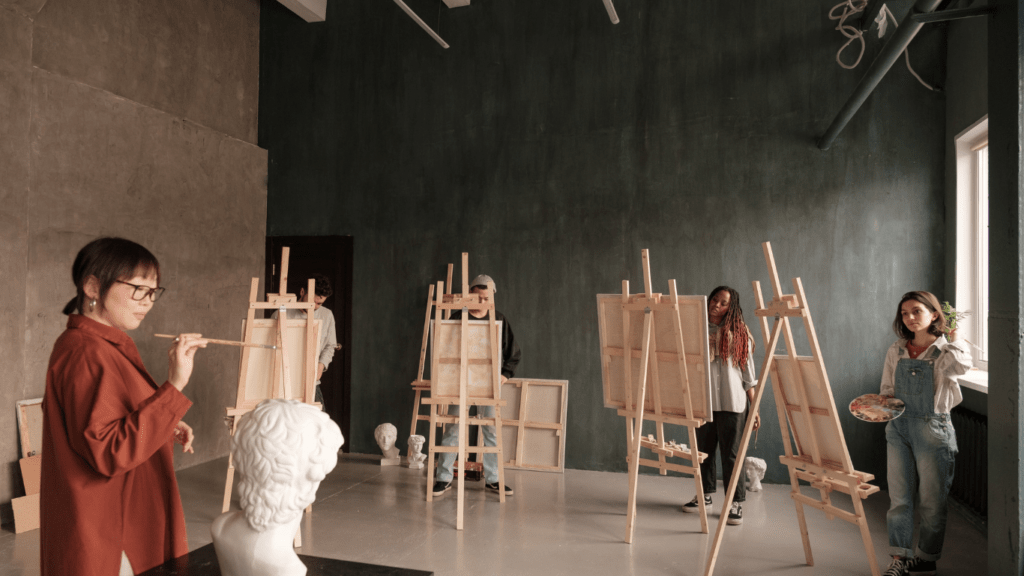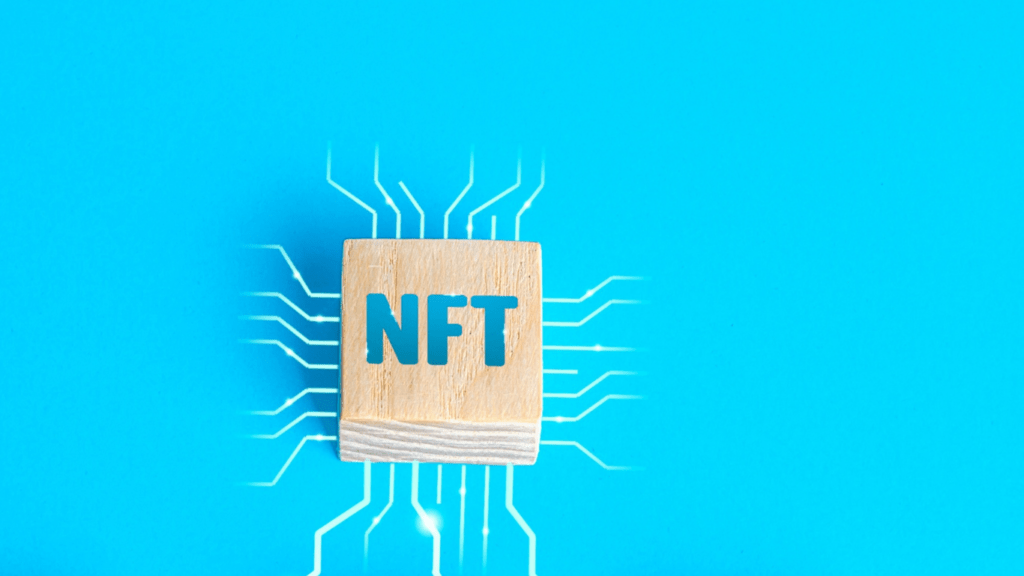Overview of NFT Art Markets
NFT art markets have become a focal point in both the art world and the tech industry. I’ve seen firsthand how NFTs have revolutionized the concept of digital ownership and trading.
What Are NFTs?
NFTs, or Non-Fungible Tokens, are unique digital assets verified using blockchain technology. Unlike cryptocurrencies such as Bitcoin or Ethereum, which are fungible and can be exchanged on a one-to-one basis, NFTs are one-of-a-kind. Each NFT contains distinguishing information, making them distinct from one another.
Examples include digital art, music files, and virtual real estate. Platforms like Ethereum support these tokens, providing the necessary infrastructure for their creation and trade.
The Early Days of NFT Art
In NFT art’s early days, only a niche group of digital artists and collectors participated. Projects like CryptoPunks and CryptoKitties were among the first to use NFTs, gaining some traction in 2017 and 2018.
However, it wasn’t until 2020 that the market saw a significant influx of interest and investment. During this period, major platforms like OpenSea, Rarible, and SuperRare began to emerge, facilitating the minting, buying, and selling of digital art pieces. Early adopters reaped substantial rewards, capitalizing on the increasing demand for unique digital assets.
Factors Driving the Popularity of NFT Art
Several factors contribute to the booming popularity of NFT art markets, each playing a significant role in shaping this new digital landscape.
Technological Advancements
Advances in blockchain technology underpin the rise of NFT art. Platforms like Ethereum enable the creation and verification of unique digital assets. Smart contracts secure transactions, giving artists control over their work.
The immutability of blockchain ensures digital art remains authentic and original. High-speed internet and improved graphics processing units (GPUs) make creating and displaying digital art easier. Marketplaces like OpenSea and Rarible leverage these technologies, offering seamless user experiences.
Changes in Collectors’ Preferences
Collectors increasingly value digital ownership. The shift from physical to digital assets reflects broader societal trends. People spend more time online, making digital art more relevant.
Transparency and provenance matter to modern collectors. NFTs provide clear ownership history, increasing trust in digital art investments. Early adopters like Beeple have made headlines, inspiring other collectors. Community engagement on platforms like Discord and social media fosters connections between artists and collectors, further boosting interest in NFT art.
Impact on Traditional Art Markets

NFTs have significantly impacted traditional art markets by introducing new dynamics in competition, market value, and artist-collector relationships.
Competition or Integration?
The rise of NFT art markets has created competitive pressures for traditional art markets. Auction houses like Christie’s and Sotheby’s have started integrating NFTs into their offerings.
For example, Beeple’s “Everydays: The First 5000 Days” sold for $69.3 million at Christie’s in March 2021. This integration highlights a trend toward blending traditional and digital art, attracting diverse buyer demographics. Traditional galleries also explore avenues to incorporate NFTs, organizing hybrid exhibitions to remain relevant.
Shifts in Market Value
NFT art markets have influenced shifts in market value for traditional art. High-profile NFT sales have attracted considerable investment, sometimes diverting funds from traditional artworks.
For instance, total sales of NFT art reached over $2 billion in the first quarter of 2021 alone. Such figures emphasize the changing landscape of art valuation, where collectors increasingly value digital pieces. This shift pushes traditional artists to explore digital mediums, driving a convergence of artistic practices.
Major Players in the NFT Art Segment
As the NFT art market explodes, several key players shape its dynamics.
Artists to Watch
Prominent NFT artists have emerged, captivating collectors.
- Beeple: Renowned for his $69 million sale at Christie’s.
- Pak: Known for innovative concepts like “Merge” and “Lost Poets.”
- XCOPY: Recognized for distinctive glitch art style.
- Fewocious: Notable for vibrant and emotional digital pieces.
- Trevor Jones: Combines traditional painting with digital elements successfully.
These artists continue pushing creative boundaries, attracting substantial attention and investment.
Influential Platforms
Platforms play a crucial role in the NFT ecosystem, enabling transactions and showcasing art.
- OpenSea: The largest marketplace, offering a vast range of NFTs.
- SuperRare: Focuses on high-quality, single-edition pieces.
- Rarible: Known for its community-driven approach and governance token.
- Nifty Gateway: Partners with well-known creators, offering curated drops.
- Foundation: Empowers artists through a creator-first approach and auction model.
These platforms facilitate the growth and accessibility of the NFT art market, bolstering its rapid expansion.
Future Trends and Predictions
NFT art markets continue evolving, presenting new opportunities and challenges.
Innovations on the Horizon
Blockchain integration offers substantial prospects. Layer 2 scaling solutions like Polygon enhance transaction speed and lower costs.
Improved interoperability across different blockchains can enable artists to reach broader audiences. AI-generated art’s increasing adoption introduces new dimensions to creativity. Additionally, augmented reality (AR) and virtual reality (VR) improve the digital art experience, making it more immersive.
Potential Challenges
Environmental concerns surrounding blockchain persist. Energy-intensive Proof-of-Work (PoW) consensus mechanisms come under scrutiny, with Proof-of-Stake (PoS) seen as a greener alternative.
Market saturation may lead to difficulties, with an overflow of artworks making it harder for new artists to gain visibility. Legal ambiguities about copyright and ownership raise concerns. Scams and fraud remain risks; collectors must stay vigilant when participating in NFT transactions.

 Anna Freehill, a key contributor to Avant Garde Artistry Hub, plays a vital role in shaping the platform’s vision. As an author and collaborator, she helps bridge the worlds of art and technology, offering insightful articles that guide artists through the rapidly evolving creative landscape. Anna’s dedication to highlighting art's therapeutic value has contributed to the platform’s focus on mental and emotional well-being through creative expression.
Her involvement in building Avant Garde Artistry Hub has been instrumental in providing valuable resources to artists seeking to enhance their careers. Whether through her writing on business strategies or her support in platform development, Anna is committed to fostering a space where artists can thrive and embrace the future of art.
Anna Freehill, a key contributor to Avant Garde Artistry Hub, plays a vital role in shaping the platform’s vision. As an author and collaborator, she helps bridge the worlds of art and technology, offering insightful articles that guide artists through the rapidly evolving creative landscape. Anna’s dedication to highlighting art's therapeutic value has contributed to the platform’s focus on mental and emotional well-being through creative expression.
Her involvement in building Avant Garde Artistry Hub has been instrumental in providing valuable resources to artists seeking to enhance their careers. Whether through her writing on business strategies or her support in platform development, Anna is committed to fostering a space where artists can thrive and embrace the future of art.